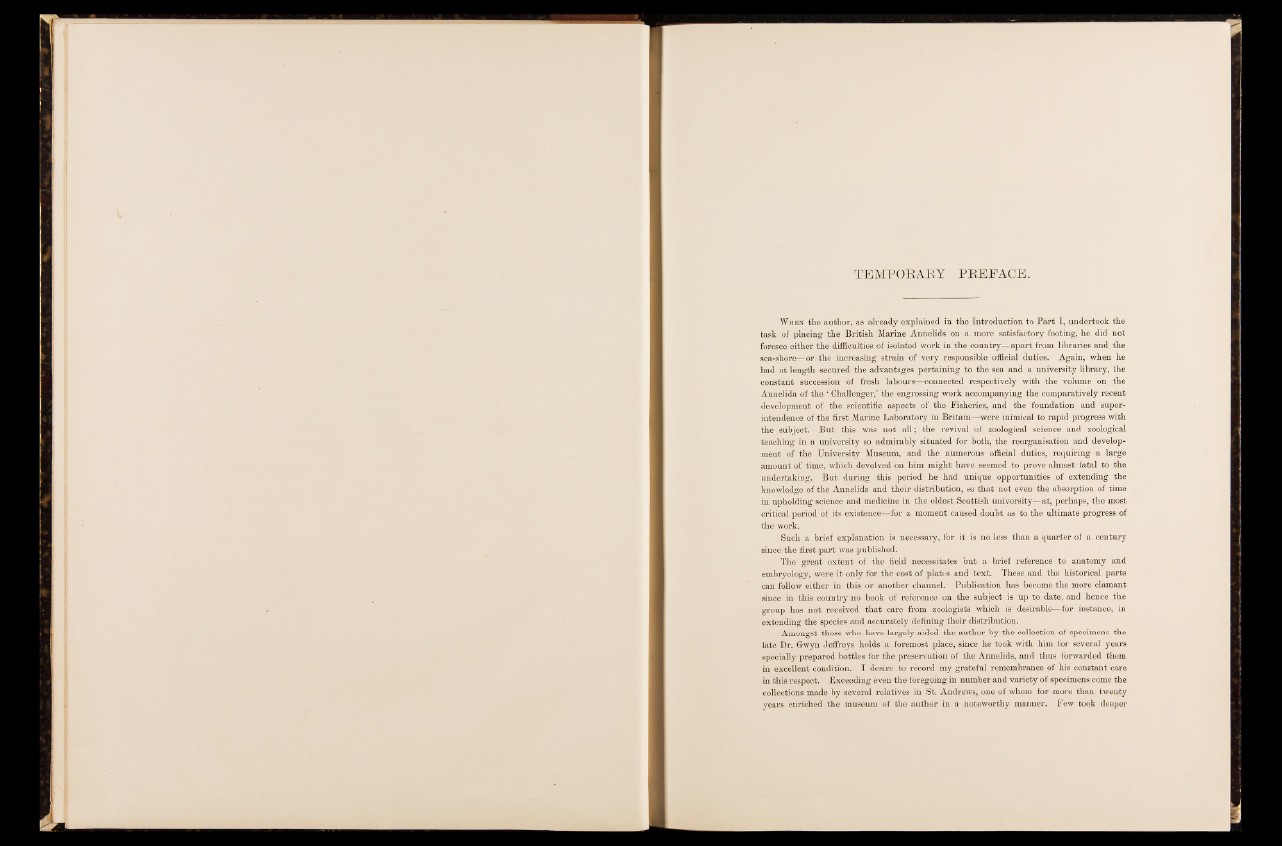
TEMPORARY PREFACE.
W hen the author, as already explained in the Introduction to Part I, undertook the
task of placing the British Marine Annelids on a more satisfactory footing, he did not
foresee either the difficulties of isolated work in the country—apart from libraries and the
sea-shore—or the increasing strain of very responsible official duties. Again, when he
had at length secured the advantages pertaining to the sea and a university library, the
constant succession of fresh labours—connected respectively with the volume on the
Annelida of the ‘ Challenger,’ the engrossing work accompanying the comparatively recent
development of the scientific aspects of the Fisheries, and the foundation and superintendence
of the first Marine Laboratory in Britain—were inimical to rapid progress with
the subject. But this was not all; the revival of zoological science and zoological
teaching in a university so admirably situated for both, the reorganisation and development
of the University Museum, and the numerous official duties, requiring a large
amount of time, which devolved on him might have seemed to prove almost fatal to the
undertaking. But during this period he had unique opportunities of extending the
knowledge of the Annelids and their distribution, so that not even the absorption of time
in upholding science and medicine in the oldest Scottish university—at, perhaps, the most
critical period of its existence—for a moment caused doubt as to the ultimate progress of
the work.
Such a brief explanation is necessary, for it is no less than a quarter of a century
since the first part was published.
The great extent of the field necessitates but a brief reference to anatomy and
embryology, were it only for the cost of plates and text. These and the historical parts
can follow either in this or another channel. Publication has become the more clamant
since in this country no book of reference on the subject is up to date, and hence the
group has not received that care from zoologists which is desirable—for instance, in
extending the species and accurately defining their distribution.
Amongst those who have largely aided the author by the collection of specimens the
late Dr. G-wyn Jeffreys holds a foremost place, since he took with him for several years
specially prepared bottles for the preservation of the Annelids, and thus forwarded them
in excellent condition. I desire to record my grateful remembrance of his constant care
in this respect. Exceeding even the foregoing in number and variety of specimens come the
collections made by several relatives in St. Andrews, one of whom for more than twenty
years enriched the museum of the author in a noteworthy manner. Few took deeper